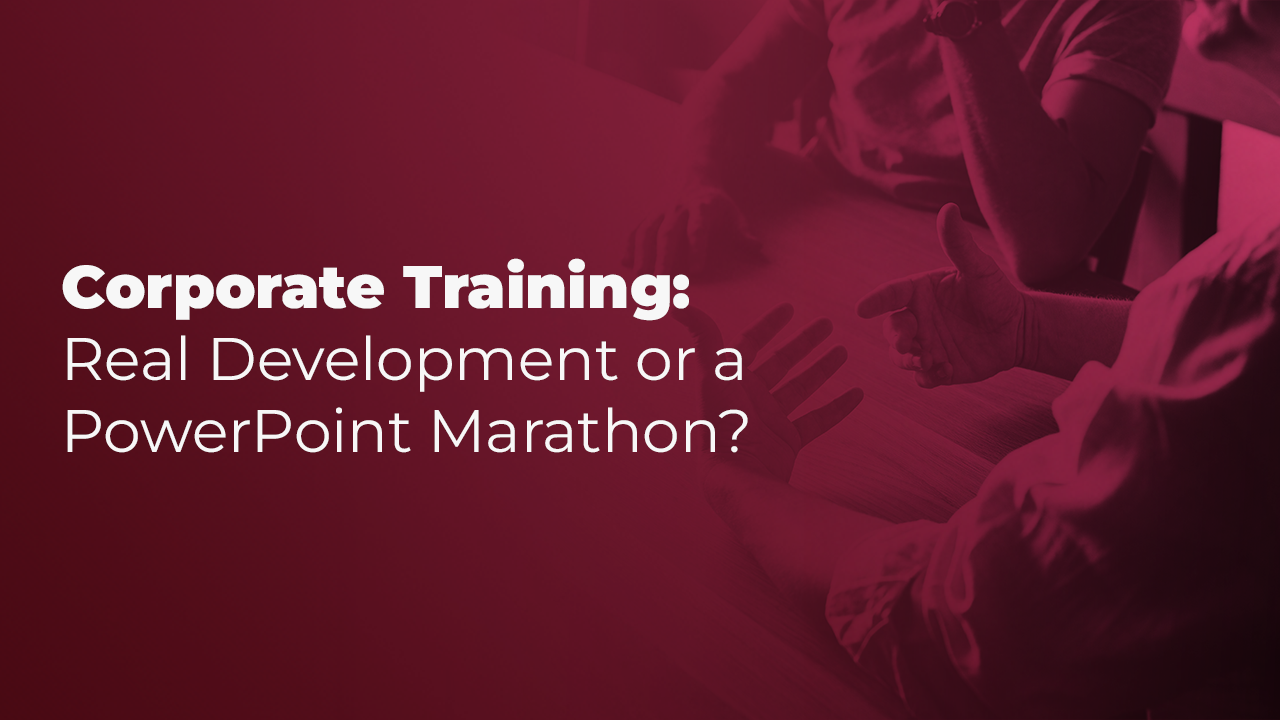Corporate Training: Real Development or a PowerPoint Marathon?
“Is giving a certificate at the end enough?”
Training or Just a Slide Show?
When people think of corporate training, the image that often comes to mind is still the same:
A dimly lit room, endless slides on the screen, the monotone voice of the presenter, and occasional glances at phone screens… At the end of the day, a certificate is handed out: “This employee has attended this training.”
But does attendance really equal development?
For years, a common misconception in corporate environments has been treating trainings as events rather than processes. True development goes beyond PowerPoint, transforming behaviors and ways of working in a sustainable journey.
Why Do We Still Treat Trainings as “Completed Tasks”?
Because it’s easy to measure. Training was conducted, participation was recorded, a certificate was issued—these are tangible steps.
But the real challenge is measuring impact:
- Are participants able to apply what they’ve learned in the workplace?
- Has behavior changed?
- Has team performance or organizational culture improved?
Often, these questions remain unclear. Many companies consider “certificate + report” sufficient. Yet training is not just a checklist item—it’s an investment in the corporate future.
Employee Perspective on Training
For employees, training is not only about gaining knowledge; it’s also about:
- Feeling valued: “The company is investing in me.”
- Building connections: Engaging with colleagues on a different level.
- Active participation: Having a voice, sharing experiences, contributing.
Research supports this:
- Gallup 2022: Employees participating in development-focused training show 41% higher engagement.
- Deloitte 2023 HR Report: Organizations offering interactive training see a 60% increase in on-the-job application of learned skills.
So, the issue isn’t only knowledge transfer—it’s creating a meaningful experience.
What Makes Training Effective?
A truly effective corporate training should go beyond presentations and include four core elements:
- Needs-Based Design: Trainings should address real organizational and employee needs, not just trending topics.
- Participant-Centered Approach: Employees should engage, discuss, practice, and share. Examples include role plays, case studies, and interactive exercises.
- Application and Follow-Up: Learning in the classroom is wasted without on-the-job application. Follow-up sessions, mentorship, and tracking mechanisms are essential.
- Transformative Impact: The goal is not just knowledge—it’s behavior and culture change. For example, communication training should ultimately influence how meetings are conducted.
The Role of PowerPoint
Let’s be fair: PowerPoint isn’t useless. When used correctly and in support of interactive methods, it’s a very effective training tool. The problem arises when it stands alone. A slide deck only becomes meaningful when combined with experience, discussion, and practice.
Consider:
- A leadership training delivered solely through slides versus
- A leadership workshop with real case discussions, role plays, and participant experience sharing
The difference is clear.
After Training: Certificate or Sustainability?
Many organizations overlook this point: training is the starting line, not the finish line. The real work begins after certificates are issued:
- Integrating learned skills into daily work processes
- Support from managers during this process
- Reflecting training outcomes in performance metrics
Without this follow-up, training remains just a “nice event”.
Case Study: Two Approaches
📍 Company A
Held a one-day communication training. Participation was high, slides were polished, certificates issued. Two months later, communication issues persisted. Result: training ROI not realized.
📍 Company B
Designed communication training as a three-stage program:
- Started with a needs analysis to identify specific challenges
- Included interactive exercises in the training
- Followed up with short sessions and feedback mechanisms over three months
Result: Team meeting efficiency improved by 30%, employee satisfaction significantly increased.
Key takeaway: When training becomes a process, not just an event, it delivers real impact.
The Future of Corporate Training
Emerging trends in corporate learning show that the PowerPoint marathon is giving way to more engaging experiences:
- Microlearning: Short, focused, digestible modules
- Digital platforms: Accessible anytime, anywhere
- Gamification: Making learning fun and interactive
- Coaching & Mentorship: Supporting post-training development
In short, it’s no longer about merely delivering training—it’s about bringing learning to life.
Corporate training is one of the most important tools for shaping the future of organizations. But if reduced to a PowerPoint marathon, its real potential is lost.
Effective training:
- Focuses on actual needs
- Encourages participation
- Reinforces learning through application
- Most importantly, drives behavioral change
Certificates can be a nice souvenir—but what organizations truly need is sustainable development.
